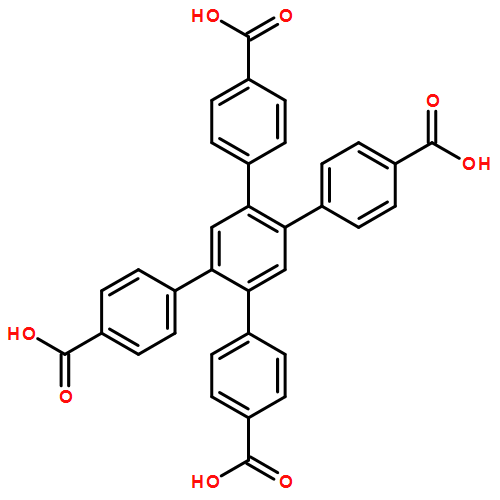Co-reporter: Marianne B. Lalonde, Rachel B. Getman, Jeong Yong Lee, John M. Roberts, Amy A. Sarjeant, Karl A. Scheidt, Peter A. Georgiev, Jan P. Embs, Juergen Eckert, Omar K. Farha, Randall Q. Snurr and Joseph T. Hupp
pp: 9408-9414
Publication Date(Web):06 Mar 2013
DOI: 10.1039/C3CE40198G
Metal–organic frameworks (MOFs) are permanently porous, crystalline materials and promising hydrogen sorbents. However, the H2 heats of adsorption are generally too small to promote significant adsorption under desired storage conditions. Increasing the H2–framework interaction energy is a prominent goal of current MOF design. Hydrogen binds to MOFs through a variety of interactions, such as dispersion, charge–induced-dipole, charge–quadrupole, and even chemical bonding. To date, these interactions have been enhanced by incorporating strongly charged groups into the MOF structures, but the effects tend to be short-range and only effective at low loadings. In this work we report the structures and H2 storage properties of two zwitterionic MOFs. These structures feature zwitterionic characteristics arising from N-heterocyclic azolium groups in the linkers and negatively charged Zn2(CO2)5 nodes. These groups exhibit net charges of +0.5 and −1.0, respectively, and interact strongly with the H2 quadrupole. Isosteric heats of adsorption of up to 7.0 kJ mol−1 are observed in these zwitterionic MOFs.
Co-reporter: Tendai Gadzikwa ; Omar K. Farha ; Christos D. Malliakas ; Mercouri G. Kanatzidis ; Joseph T. Hupp ;SonBinh T. Nguyen
pp: 13613-13615
Publication Date(Web):September 9, 2009
DOI: 10.1021/ja904189d
A noncatenated, Zn-based metal−organic framework (MOF) material bearing silyl-protected acetylenes was constructed and postsynthetically modified using “click” chemistry. Using a solvent-based, selective deprotection strategy, two different organic azides were “clicked” onto the MOF crystals, resulting in a porous material whose internal and external surfaces are differently functionalized.
Co-reporter: Monica C. So ; Shengye Jin ; Ho-Jin Son ; Gary P. Wiederrecht ; Omar K. Farha ;Joseph T. Hupp
pp: 15698-15701
Publication Date(Web):October 15, 2013
DOI: 10.1021/ja4078705
We report the synthesis and characterization of two thin films (DA-MOF and L2-MOF) of porphyrin-based MOFs on functionalized surfaces using a layer-by-layer (LbL) approach. Profilometry measurements confirm that the film thickness increases systematically with number of growth cycles. Polarization excitation and fluorescence measurements indicate that the porphyrin units are preferentially oriented, while X-ray reflectivity scans point to periodic ordering. Ellipsometry measurements show that the films are highly porous. Since there are currently few methods capable of yielding microporous MOFs containing accessible free-base porphyrins, it is noteworthy that the LbL growth permits direct MOF incorporation of unmetalated porphyrins. Long-range energy transfer is demonstrated for both MOF films. The findings offer useful insights for subsequent fabrication of MOF-based solar energy conversion devices.
Co-reporter: Shengye Jin ; Ho-Jin Son ; Omar K. Farha ; Gary P. Wiederrecht ;Joseph T. Hupp
pp: 955-958
Publication Date(Web):January 7, 2013
DOI: 10.1021/ja3097114
Because of their efficient energy-transport properties, porphyrin-based metal–organic frameworks (MOFs) are attractive compounds for solar photochemistry applications. However, their absorption bands provide limited coverage in the visible spectral range for light-harvesting applications. We report here the functionalization of porphyrin-based MOFs with CdSe/ZnS core/shell quantum dots (QDs) for the enhancement of light harvesting via energy transfer from the QDs to the MOFs. The broad absorption band of the QDs in the visible region offers greater coverage of the solar spectrum by QD–MOF hybrid structures. We show through time-resolved emission studies that photoexcitation of the QDs is followed by energy transfer to the MOFs with efficiencies of more than 80%. This sensitization approach can result in a >50% increase in the number of photons harvested by a single monolayer MOF structure with a monolayer of QDs on the surface of the MOF.
Co-reporter: Abraham M. Shultz ; Omar K. Farha ; Debashis Adhikari ; Amy A. Sarjeant ; Joseph T. Hupp ;SonBinh T. Nguyen
pp: 3174-3176
Publication Date(Web):March 7, 2011
DOI: 10.1021/ic101952y
From a combination of chiral Mn(salen) struts and the tetratopic ligand tetrakis(4-carboxyphenyl)benzene, a large-pore, noncatenated metal-organic framework (MOF) material, MnSO-MOF, has been synthesized. Following solvent exchange with hydrophobic CHCl3, treatment of MnSO-MOF with aqueous H2O2 allowed for the selective demetalation of Mn(salen) struts at and near the surface of the crystals. The resulting crystals displayed greatly enhanced size-selective catalysis compared to the as-synthesized material. Handling of the mechanically fragile MnSO-MOF crystals was greatly facilitated by activation with supercritical CO2.


